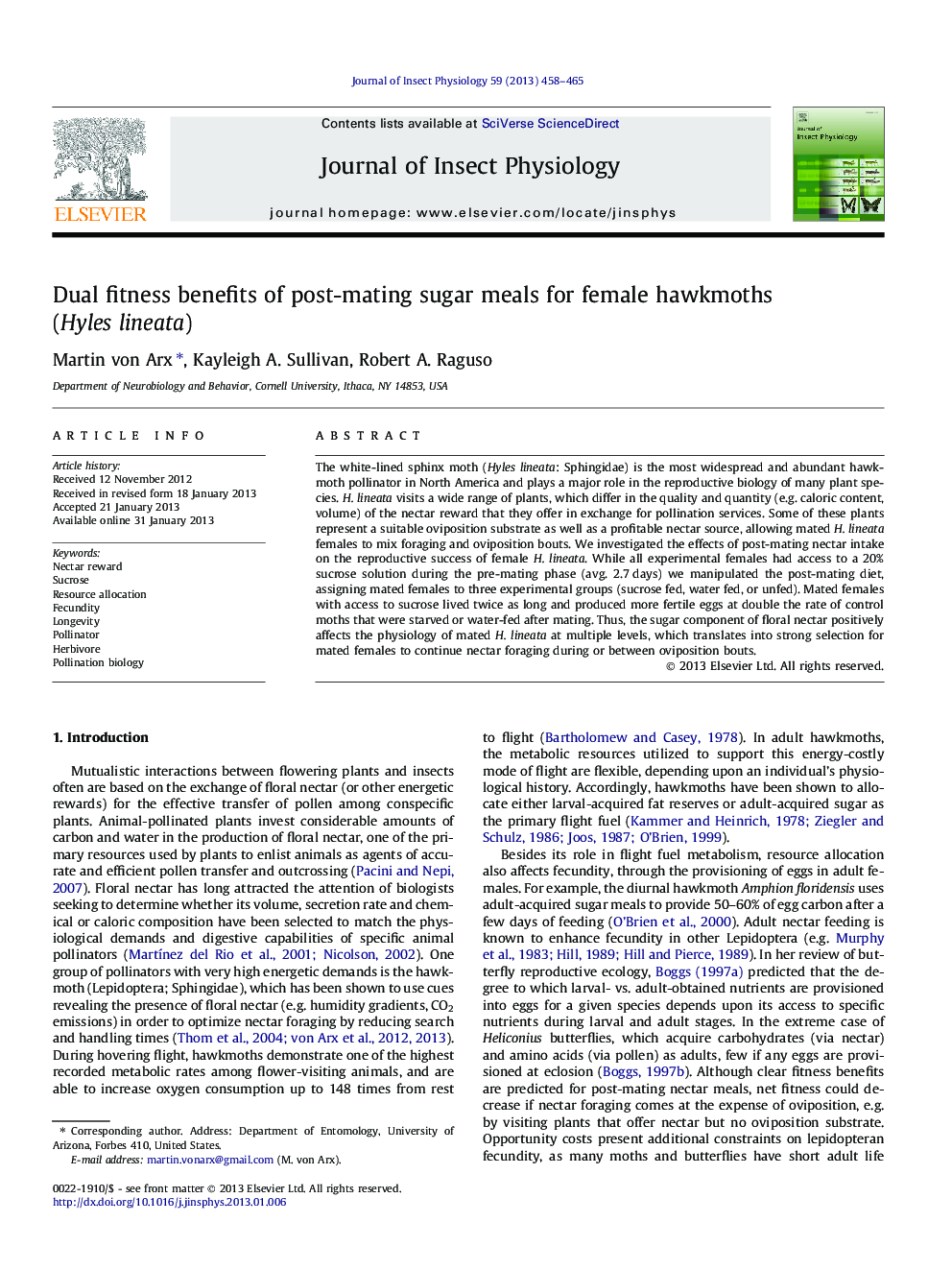| Article ID | Journal | Published Year | Pages | File Type |
|---|---|---|---|---|
| 5921911 | Journal of Insect Physiology | 2013 | 8 Pages |
The white-lined sphinx moth (Hyles lineata: Sphingidae) is the most widespread and abundant hawkmoth pollinator in North America and plays a major role in the reproductive biology of many plant species. H. lineata visits a wide range of plants, which differ in the quality and quantity (e.g. caloric content, volume) of the nectar reward that they offer in exchange for pollination services. Some of these plants represent a suitable oviposition substrate as well as a profitable nectar source, allowing mated H. lineata females to mix foraging and oviposition bouts. We investigated the effects of post-mating nectar intake on the reproductive success of female H. lineata. While all experimental females had access to a 20% sucrose solution during the pre-mating phase (avg. 2.7Â days) we manipulated the post-mating diet, assigning mated females to three experimental groups (sucrose fed, water fed, or unfed). Mated females with access to sucrose lived twice as long and produced more fertile eggs at double the rate of control moths that were starved or water-fed after mating. Thus, the sugar component of floral nectar positively affects the physiology of mated H. lineata at multiple levels, which translates into strong selection for mated females to continue nectar foraging during or between oviposition bouts.
Graphical abstractDownload full-size imageHighlights⺠Energy intake limited to pre-mating stages results in a decrease of moth fitness. ⺠Post-mating sucrose intake increases longevity and reproductive output. ⺠Mated females are selected to continue nectar foraging during oviposition bouts. ⺠Mated females might prefer host plants that offer oviposition substrate and nectar.
